In a groundbreaking archaeological revelation, the Israel Antiquities Authority (IAA) has announced the public debut of stunning Roman-era wall paintings discovered in Ashkelon, a coastal city in Israel. These exquisite artworks, dating back at least 1,700 years, have been meticulously preserved and will soon be accessible to the public for the first time.
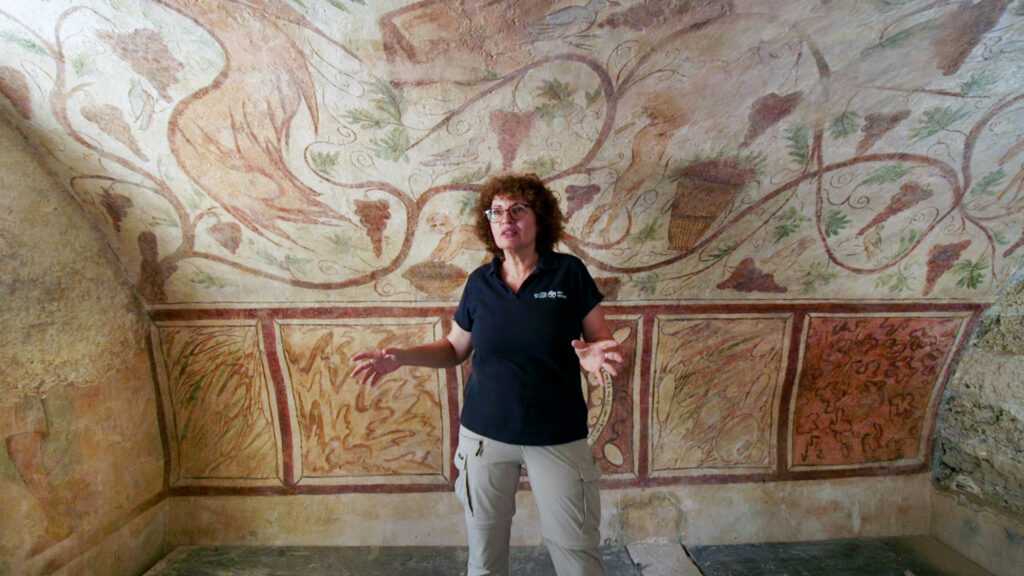
Dr. Elena Kogan-Zehavi, Israel Antiquities Authority, who uncovered one of the tombs about 30 years ago, standing in the tombs after their preservation
The paintings adorn two vaulted tombs near Ashkelon’s marina and depict a rich tapestry of Greek mythological figures, people, plants, and animals. Found decades ago but seen by few, these masterpieces offer a rare glimpse into the artistic sophistication of ancient Roman civilization in the region.
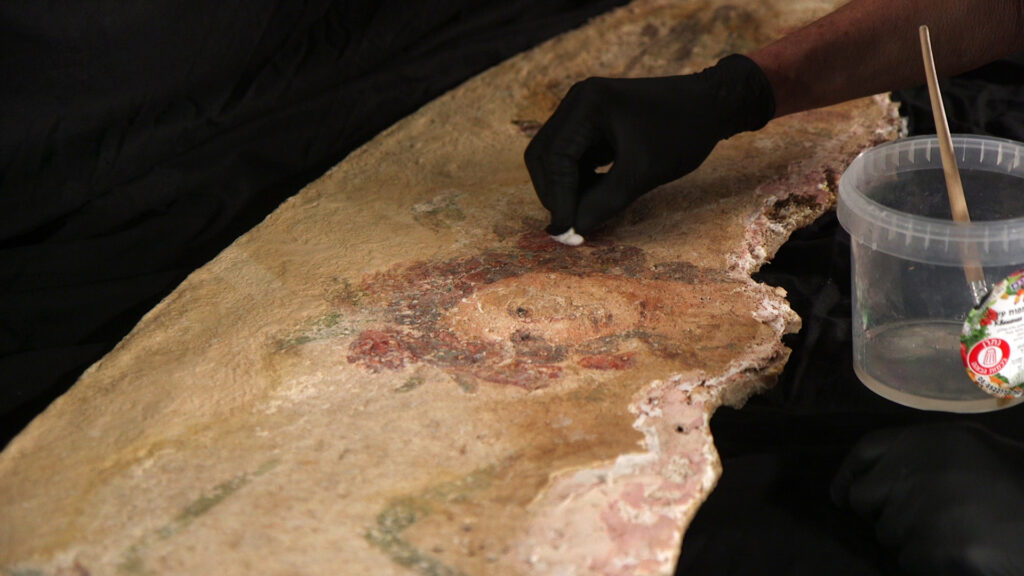
“Ashkelon is one of the world’s oldest cities,” said Mayor Tomer Glam. “As we shape the city’s future, we ensure a place of honor for its glorious and rich past.” The mayor highlighted the city’s recent efforts to preserve and integrate historical sites into public spaces, dubbing Ashkelon “Israel’s City of Antiquities.”
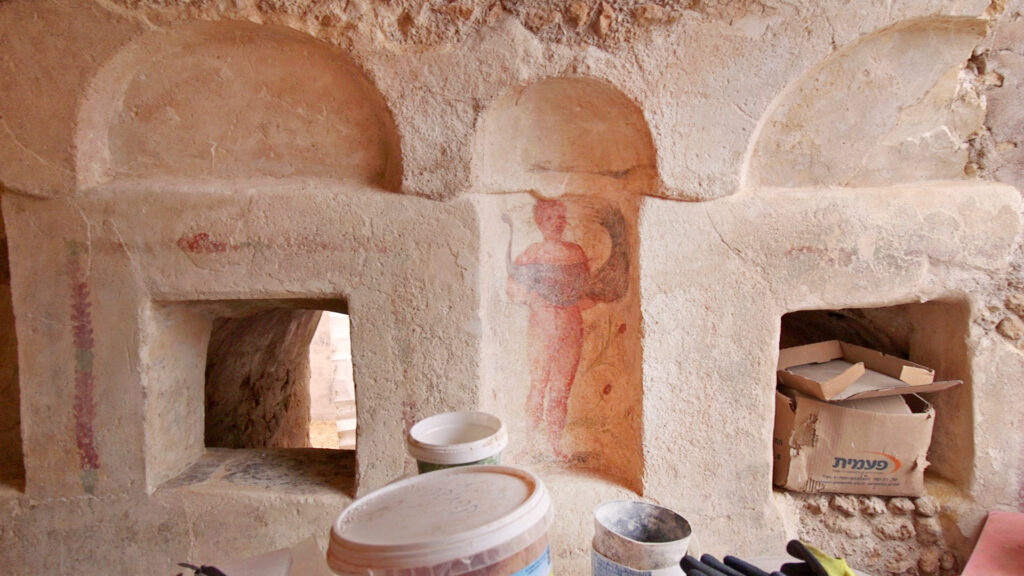
The older of the two tombs, dating to the early 4th century CE, features vivid representations of Greek deities such as Demeter and Medusa, alongside scenes of daily life and nature. A second tomb, relocated from another site in Ashkelon, dates back to the 2nd century CE and boasts equally impressive decorations.
Mark Abrahami, head of the IAA’s art conservation branch, emphasized the rarity of such well-preserved ancient wall paintings in Israel’s humid climate. “We had to conduct a long and sensitive process to stop and repair the ravages of time and weathering,” he explained.
The conservation project, funded by the Ashkelon Municipality, is part of a broader initiative to develop the city’s archaeological treasures. Other recent projects include the opening of a public park featuring ancient industrial sites and the upgrade of the city’s sarcophagus courtyard.
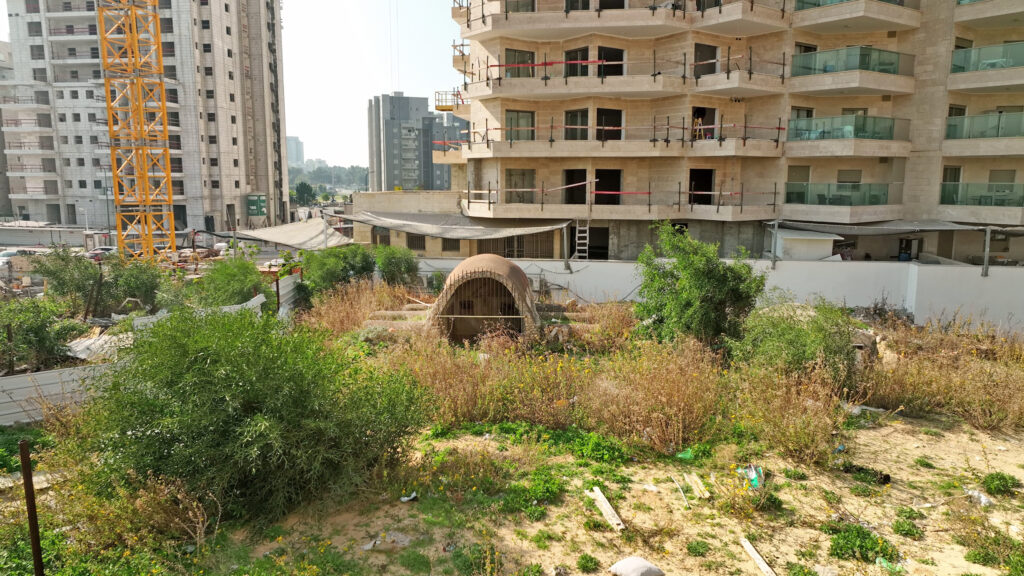
The decorated tombs prior to the establishment of the Ashkelon archaeological park
Eli Escusido, IAA Director, praised Ashkelon as a model for integrating ancient findings into urban landscapes. “Ashkelon is an example of how the integration of ancient findings into the urban fabric… imparts additional worth to and provokes interest in its public spaces,” he said.
The newly conserved tombs are set to open to the public during the upcoming holiday season, offering residents and tourists alike an opportunity to marvel at these rare archaeological gems and gain insight into Ashkelon’s fascinating history.
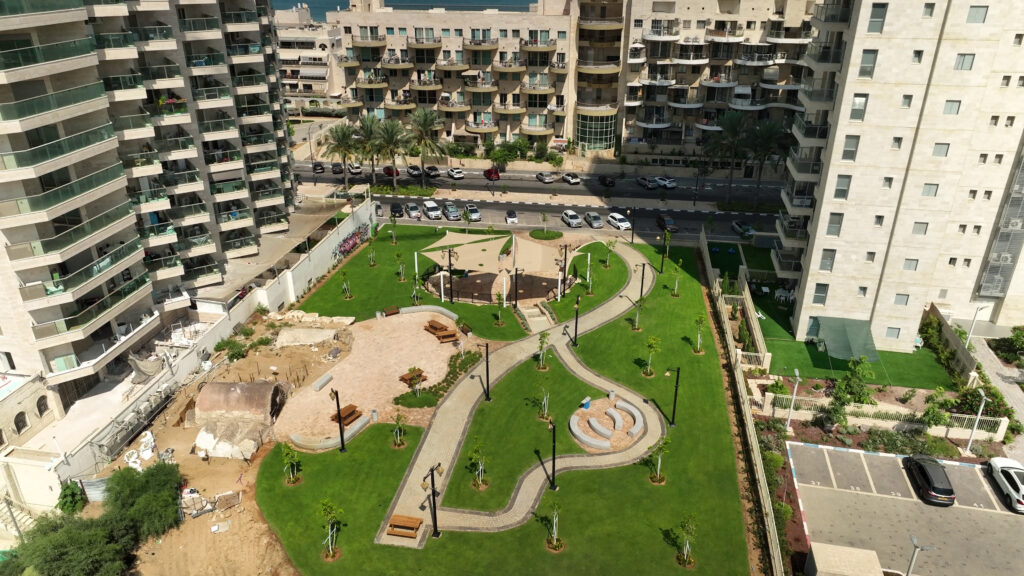
The new Archaeological Park in Ashkelon
As this ancient port city continues to balance modern development with historical preservation, the unveiling of these Roman wall paintings marks a significant milestone in bringing Israel’s rich cultural heritage to light.




